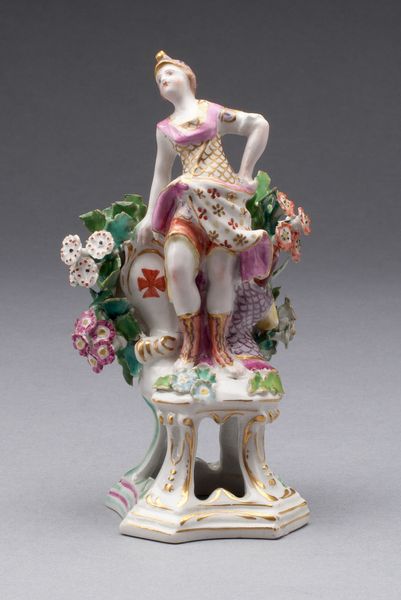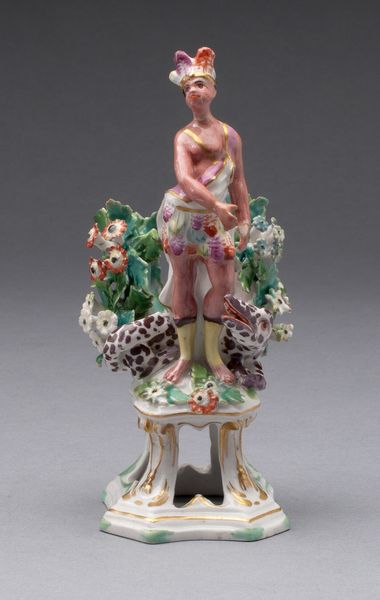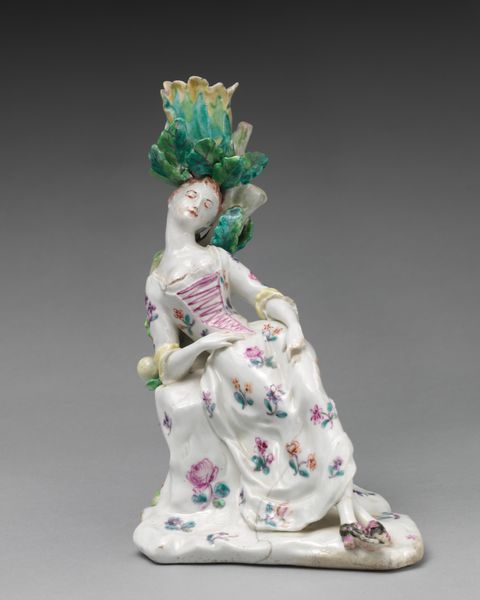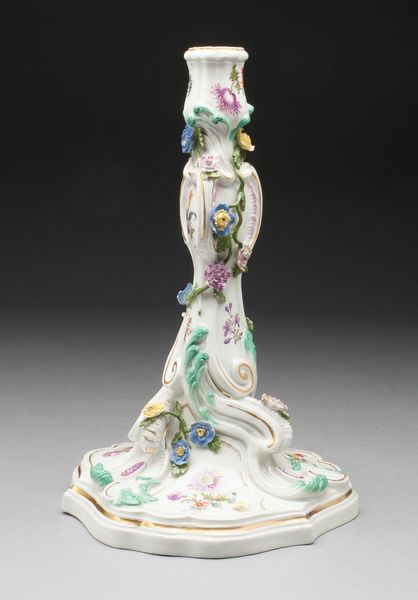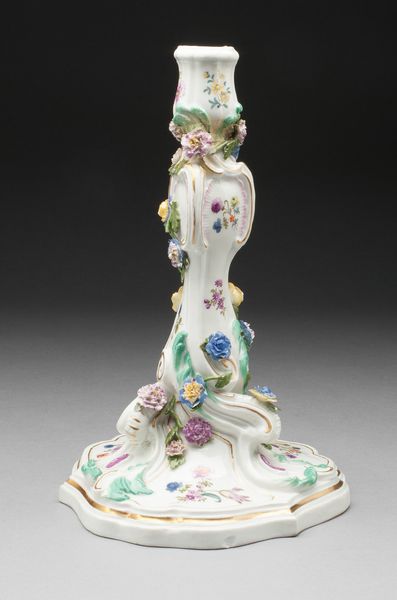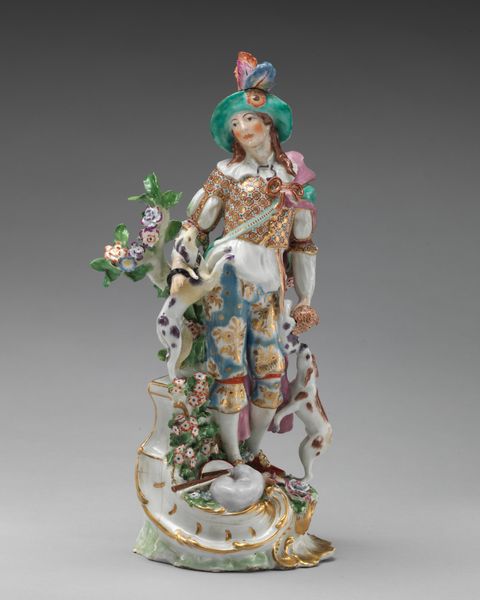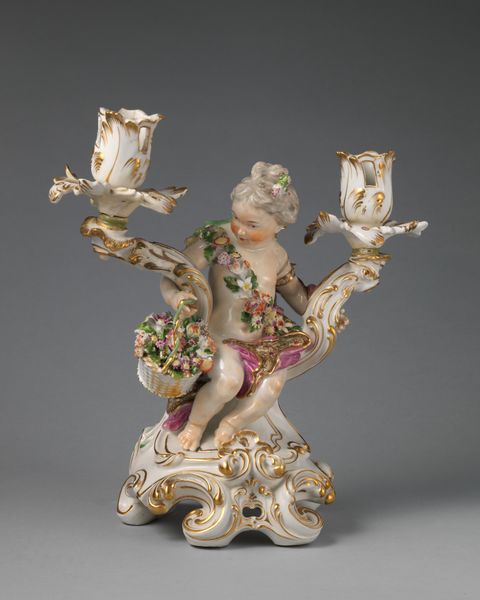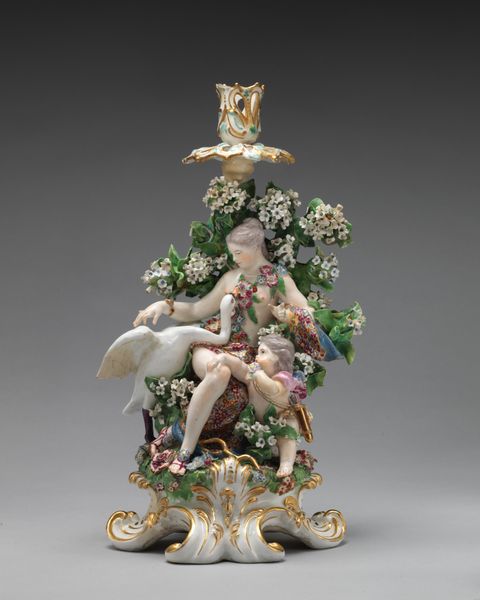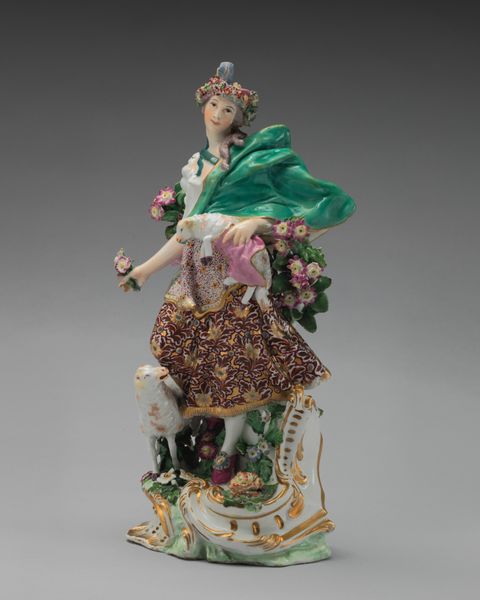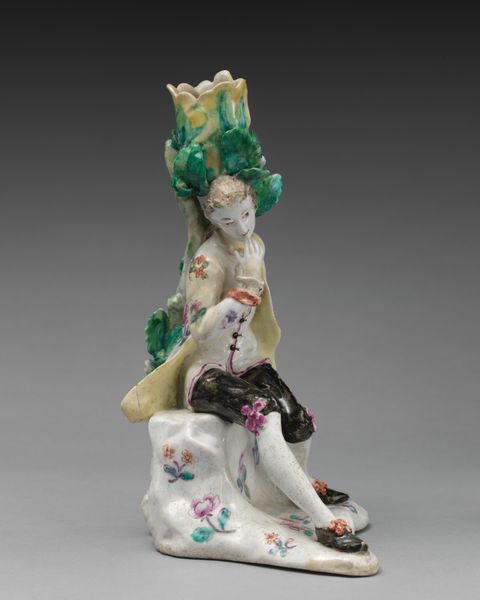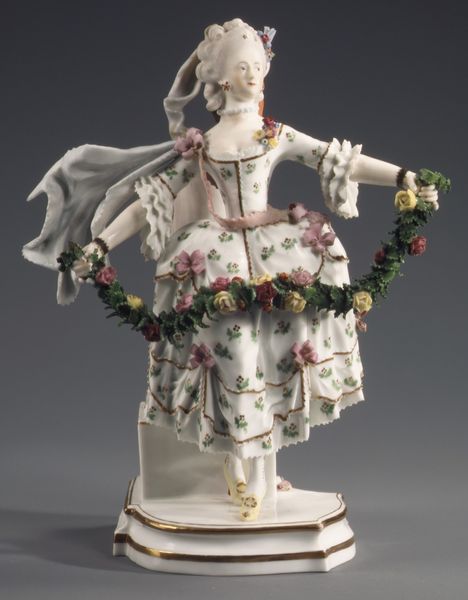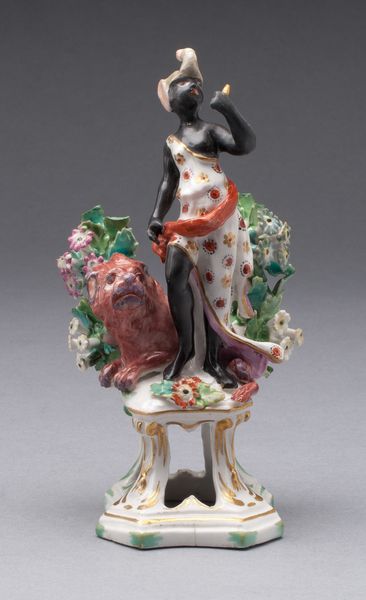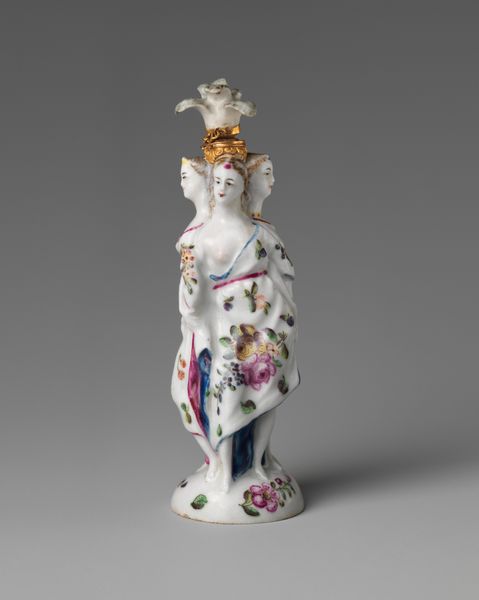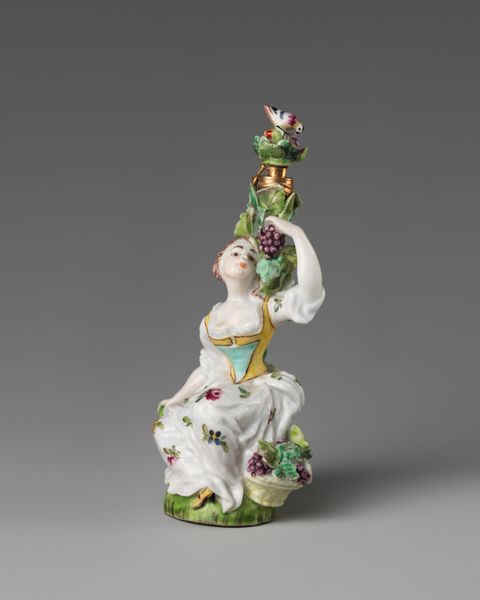
ceramic, porcelain, sculpture
#
allegory
#
ceramic
#
porcelain
#
figuration
#
sculpture
#
orientalism
#
decorative-art
#
rococo
Dimensions: 12.9 × 7.3 × 5.9 cm (5 1/8 × 2 7/8 × 2 15/16 in.)
Copyright: Public Domain
Curator: Oh, this piece feels so delicate. All of these glazed porcelain flowers are such beautiful detail! Editor: This is the "Figure of Asia", crafted around 1766 by the Bow Porcelain Factory. It’s currently held here at The Art Institute of Chicago. As the title suggests, this is an allegorical representation. Curator: The figure is gracefully poised holding what looks to be a lidded urn. There’s such a focus on decorative ornamentation, between the gilding and those ceramic blooms. But how was Asia imagined in Europe during this era? Editor: It’s impossible to divorce pieces like this from the broader context of colonialism and trade. Figures like "Asia" functioned as projections of European fantasies onto the rest of the world. It certainly isn't accidental that this factory took Europe as its biggest inspiration, drawing the most fashionable pieces to London. Curator: Yes, this is reflected even in its style; very Rococo, light and decorative. It’s less about a true likeness, more a symbol… and a product, really, that's for show in the houses of elites. Editor: Absolutely. The production and consumption of these kinds of objects were deeply intertwined with global power dynamics. Also, the figure is predominantly white and positioned upon a pedestal. Let's remember to question the implicit values reflected within seemingly beautiful objects. Curator: The “orientalism” here certainly feels pronounced. There are all those signifiers of exoticism. When you frame it that way, I can see its construction as a symbol. Editor: It highlights the politics embedded in aesthetics. This is where decorative arts speak volumes about a complicated history. Curator: That makes you question about whose vision of Asia we're really considering when viewing it through a European lens, during a particular colonial time. Editor: Exactly. By analyzing this, it calls upon questions about authenticity, representation, and the legacy of how we depict identity, and what stories that ultimately perpetuates. Curator: Yes, it's a good reminder that visual culture does a great deal more than please the eye. Editor: Precisely. By digging deeper, these historical objects can illuminate contemporary problems about whose voices and narratives have traditionally been at the forefront, and most important, to challenge what it might obscure from plain sight.
Comments
No comments
Be the first to comment and join the conversation on the ultimate creative platform.
